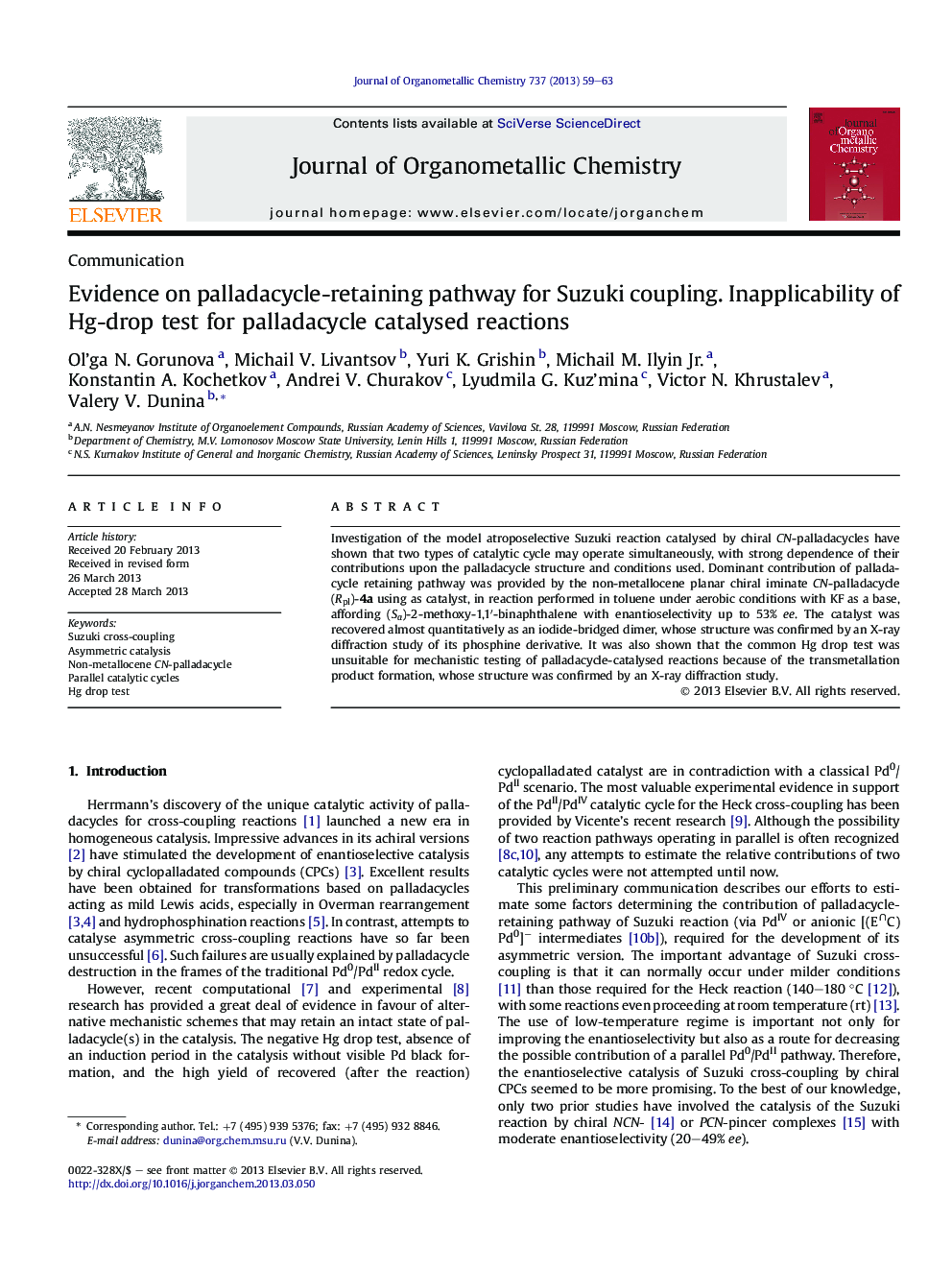| Article ID | Journal | Published Year | Pages | File Type |
|---|---|---|---|---|
| 1322720 | Journal of Organometallic Chemistry | 2013 | 5 Pages |
•Atroposelective Suzuki reaction.•Non-metallocene planar chiral iminate CN-palladacycle as catalyst.•Two types of catalytic cycle operating simultaneously.•Conditions for palladacycle retaining pathway.•Hg drop test inapplicability for mechanistic testing of palladacycle-catalysed reactions.
Investigation of the model atroposelective Suzuki reaction catalysed by chiral CN-palladacycles have shown that two types of catalytic cycle may operate simultaneously, with strong dependence of their contributions upon the palladacycle structure and conditions used. Dominant contribution of palladacycle retaining pathway was provided by the non-metallocene planar chiral iminate CN-palladacycle (Rpl)-4a using as catalyst, in reaction performed in toluene under aerobic conditions with KF as a base, affording (Sa)-2-methoxy-1,1′-binaphthalene with enantioselectivity up to 53% ee. The catalyst was recovered almost quantitatively as an iodide-bridged dimer, whose structure was confirmed by an X-ray diffraction study of its phosphine derivative. It was also shown that the common Hg drop test was unsuitable for mechanistic testing of palladacycle-catalysed reactions because of the transmetallation product formation, whose structure was confirmed by an X-ray diffraction study.
Graphical abstractSuzuki coupling may be carried out via palladacycle-retaining pathway by tuning catalyst structure and reaction conditions. Inapplicability of the Hg drop test for mechanistic studies of palladacycle-catalysed reactions was discovered.Figure optionsDownload full-size imageDownload as PowerPoint slide
